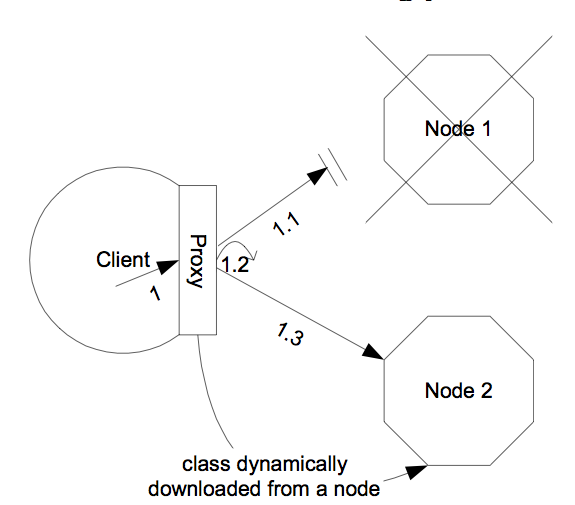17.2. Service Architectures
The clustering topography defined by the JGroups configuration on each node is of great importance to system administrators. But for most application developers, the greater concern is probably the cluster architecture from a client application's point of view. Two basic clustering architectures are used with JBoss Enterprise Application Platform: client-side interceptors (a.k.a. smart proxies or stubs) and external load balancers. Which architecture your application will use will depend on what type of client you have.
17.2.1. Client-side interceptor architecture
Most remote services provided by the JBoss Enterprise Application Platform, including JNDI, EJB, JMS, RMI and JBoss Remoting, require the client to obtain (for example, to look up and download) a remote proxy object. The proxy object is generated by the server and it implements the business interface of the service. The client then makes local method calls against the proxy object. The proxy automatically routes the call across the network where it is invoked against service objects managed in the server. The proxy object figures out how to find the appropriate server node, marshal call parameters, unmarshal call results, and return the result to the caller client. In a clustered environment, the server-generated proxy object includes an interceptor that understands how to route calls to multiple nodes in the cluster.
The proxy's clustering logic maintains up-to-date knowledge about the cluster. For instance, it knows the IP addresses of all available server nodes, the algorithm to distribute load across nodes (see next section), and how to failover the request if the target node not available. As part of handling each service request, if the cluster topology has changed the server node updates the proxy with the latest changes in the cluster. For instance, if a node drops out of the cluster, each proxy is updated with the new topology the next time it connects to any active node in the cluster. All the manipulations done by the proxy's clustering logic are transparent to the client application. The client-side interceptor clustering architecture is illustrated in Figure 17.2, “The client-side interceptor (proxy) architecture for clustering”.

Figure 17.2. The client-side interceptor (proxy) architecture for clustering